A pair of big round eyeballs are staring at mine with a curly mane accentuating the creature’s fierce face. Standing on its hind legs, with mouth agape and chest puffed up above its forelegs, one of the prancing lions of Candi Ngawen stands before me, more than 1,000 years after it was hewn from andesite rock by the hands of a skillful sculptor of Java, at a time when the island’s residents were still predominantly Hindu and Buddhist. It must have taken a concerted effort by a lot of artisans like him to create this beautiful temple, whose current name reflects that of the tranquil Muslim-majority village that later sprang up around its ruins.
* * *
Situated on the outskirts of Yogyakarta (also called Jogja), one of three provinces on the island of Java that are home to the majority of Indonesia’s ancient Hindu and Buddhist temples, Candi Ngawen had been on my wish list for almost a decade, thanks to its unique standing lions that adorn the temple’s four corners. However, throughout the years I always ended up exploring ancient temples elsewhere – others that are not too far from the city of Jogja (that I visited during the Spice Odyssey in 2015), those closer to my hometown in Semarang (the temples of Gedong Songo and Ngempon), and the ones in East Java, including the magnificent Candi Penataran, the intriguing temples near Malang (Candi Kidal and Candi Jago, as well as Candi Singhasari), as well as the vestiges of the last major Hindu kingdom on Java (Trowulan), to name some.
That chance finally came last August when James and I returned to Jogja for a long weekend to see ARTJOG 2019. This time we were joined by Liesha, a friend of mine who went with me to the Tidung Islands off the north coast of Jakarta in 2011 but now lives in Jogja.
“Can I come with you when you go to Candi Ngawen?” she asked me when I told her about my plans.
“Sure, but we’ll take a lot of photos of the temple, and we’ll probably spend quite some time there.” I had to make sure that she would be comfortable with our pace of exploring places. Otherwise she might get bored.
“No problem. I just want to go out and see some new things.”
She’s one of those people who are never fussy about anything, which makes her an ideal travel companion.
On a Saturday morning, one hour after leaving Jogja, we arrived in a village with rice paddies and modest houses laid out in a quiet, bucolic setting. Our driver kept following the main road until we saw a dark structure made of andesite (a type of volcanic rock that was a common building material on the island in the past) rising amid its green surroundings. Except for our driver and the staff members responsible for taking care of the temple compound, we were the only people there, allowing us to take as many photos as we wanted without being judged by others.
At a glance, Candi Ngawen appeared to be a Hindu temple by virtue of its architectural style. Carved on its façades are depictions of kinnaras (half-bird celestial beings in Hindu-Buddhist mythology), deities in Svargaloka (a heavenly realm in Hindu cosmology), as well as Kala-Makara which are often present at the entrance of classical Javanese temples. However, when we peered into the sanctum through the metal bars of its modern door, a headless Buddha statue sat in solitude right in the middle of it. Not long afterward, one of the staff members approached us and asked if we wanted to go inside. What he told us next confirmed my worry about the metal bars; this locked door was installed due to the theft of artifacts in the past with the most recent incident in 1999, a year after the Indonesian economy collapsed following the 1997/98 Asian Financial Crisis. The friendly man returned to his office to get the key, and a few moments later we were already inside, the most sacred part of this temple structure.
Temple 2, where we were standing, is the only structure of the original five that has been reconstructed by the Dutch in the early 20th century. The remaining four, however, lack original stone blocks, leaving their bases the only parts that can be seen today. Nevertheless, without doubt this temple compound must have been quite important in the past given its considerable size. The friendly caretaker had by now returned to his office, leaving the three of us roaming the five ancient structures by ourselves. Once we had taken enough photos, we walked back to the entrance, past piles of stone blocks from the unreconstructed temples. We were ready to return to the city. But upon seeing the same man again, he told us about another temple not too far from where we were which we could visit on our way back.
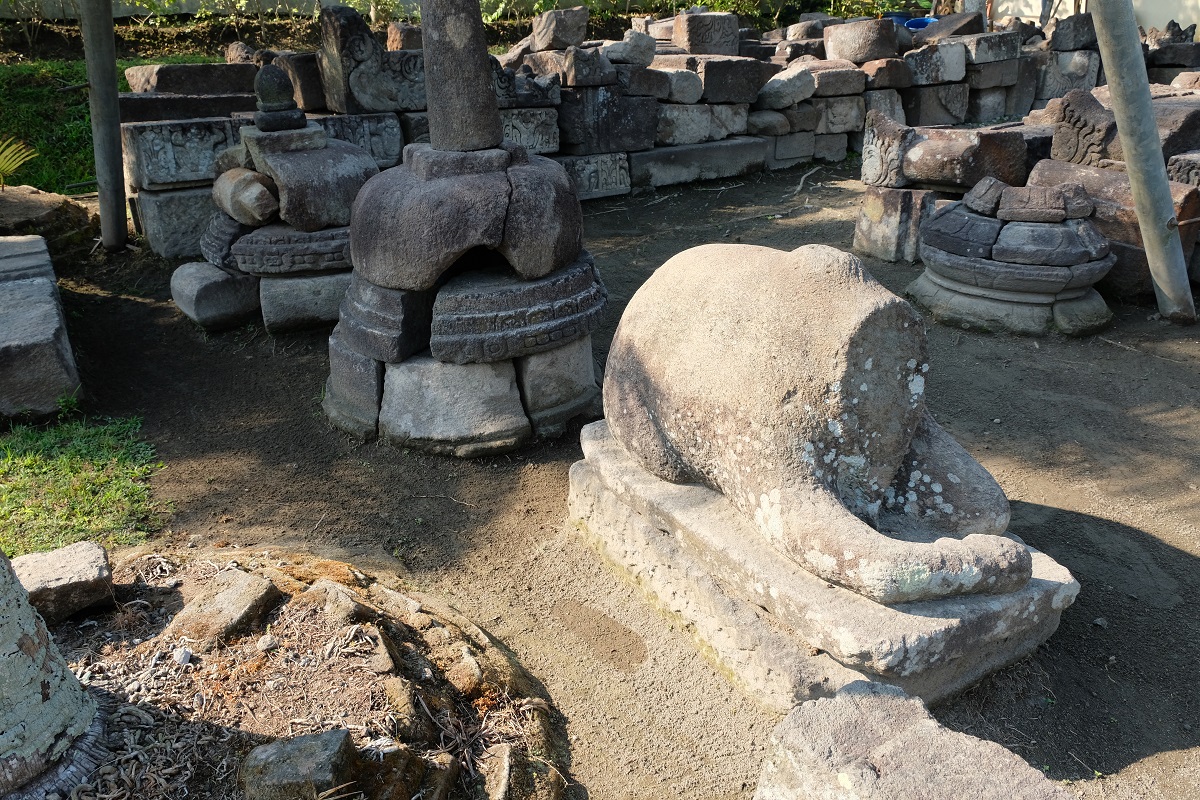
Possibly a decapitated Nandi in front of a stupa, a testament to the coexistence of Hinduism and Buddhism in Java
“It was discovered a few years ago, and until recently people couldn’t reach the temple because it was flooded,” he explained. “But now you can visit it because it’s dry.”
I made sure our driver knew the way, and after thanking the caretaker for the information we were back on the road. It didn’t take long before we turned down another small village road which would supposedly take us to this lesser-known temple. This was an even more quieter village with only a handful of houses. We breezed past rice paddies and fields planted with other crops until all of us noticed a small signboard indicating our destination. The driver pulled over and the three of us got out of the car. But we didn’t see anyone around, not even at the small office near the entrance. We decided to enter and walk down the pathway, flanked on both sides by salak (Salacca zalacca) trees – a species of plant native to Java and Sumatra – toward a shaded enclosure at the end of the path. The ancient temple compound now known as Candi Losari revealed itself only after we arrived at the perimeter fence, and surprisingly, the structures turned out to be larger than what I had expected.
Later I learned that when it was discovered in 2004, buried in thick layers of volcanic ash and soil, the temples were not flooded. It was only in 2013 when the archaeological agency of Central Java excavated the ground around the base of the temples, water started gushing out, eventually inundating the pit to a height of 3 meters. James, Liesha and I followed the small staircase that led to the temples, and once we were down there it felt both surreal and exciting at the same time, for we were standing a few meters below the Earth’s surface. We wandered around this compound of four structures – the largest one is still unreconstructed – and spotted ancient carvings on some parts of the stone blocks. A lintel with a Kala head carved on it and two Makaras close by indicated where the entrance to the sanctum was once located. Another stone clearly bore the sculpted feet of a figure which could have been the main deity worshiped at the temple, or one of the characters associated with that deity.
Then suddenly someone appeared high above us behind the fence guarding the sunken enclosure.
“After you’re done, please fill in the guestbook,” the woman said to us.
We didn’t spend as much time in Candi Losari compared to Candi Ngawen. However, I couldn’t help feeling intrigued and fascinated to know that up to this day more and more ancient Hindu-Buddhist temples are still being rediscovered across Java. Many of them disappeared from collective memory not only as Islam replaced Hinduism and Buddhism as the dominant religion on the island starting from the 15th century, but also because of numerous earthquakes and volcanic eruptions in the past that had damaged and buried many of those structures.
Soon enough, we climbed the stairs back up to ground level and went to the office where the woman was already waiting for us. We were ready to leave after writing our names in the guest book, but the young staff member suddenly told us about another temple not far from Candi Losari.
“It was unearthed very recently. If you want to see it you can follow the road.”
It was very tempting, indeed, since we were ‘in the area’. However, we decided to skip this one and opted to head back to the city after thanking her for telling us about this other site. Maybe next time.
It may take a few years until Candi Losari is completely reconstructed. But there’s a relatively more well-known ancient Hindu temple closer to the city that was once also buried deep in the ground yet now sees the sun again. And what happened to it can give us a clue to Candi Losari’s future.
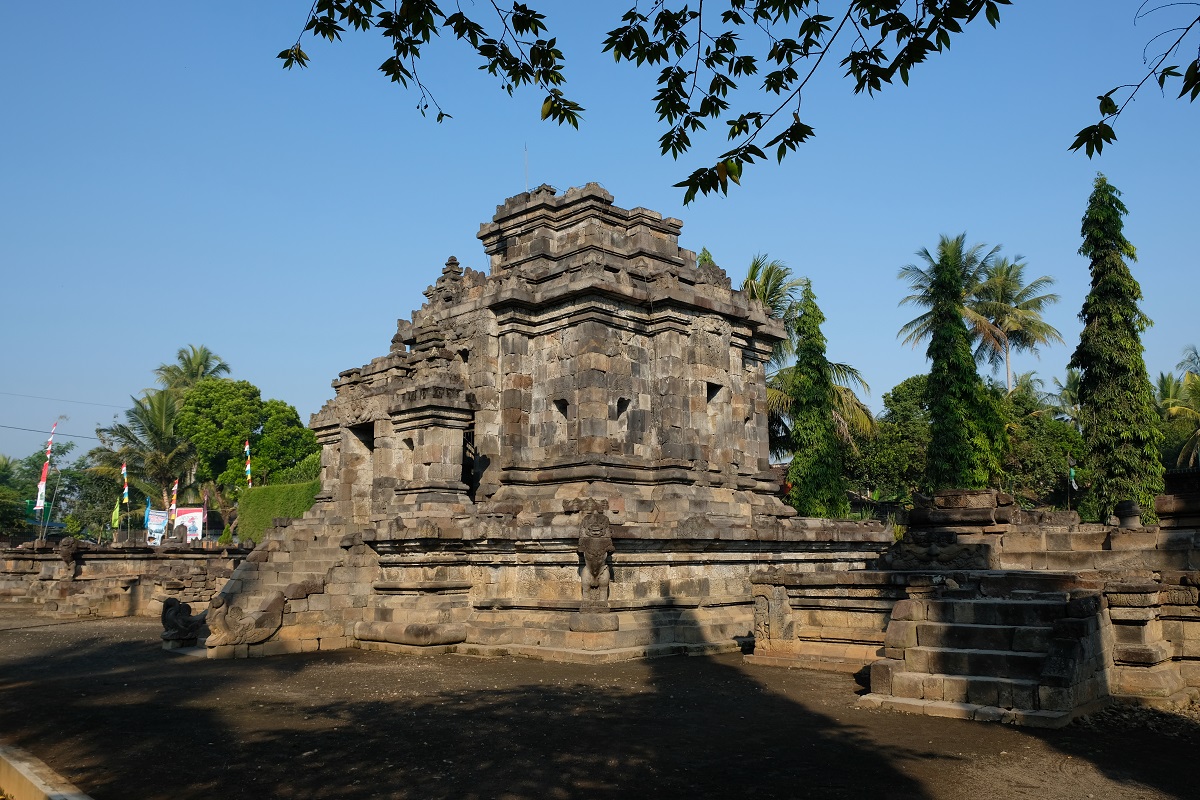
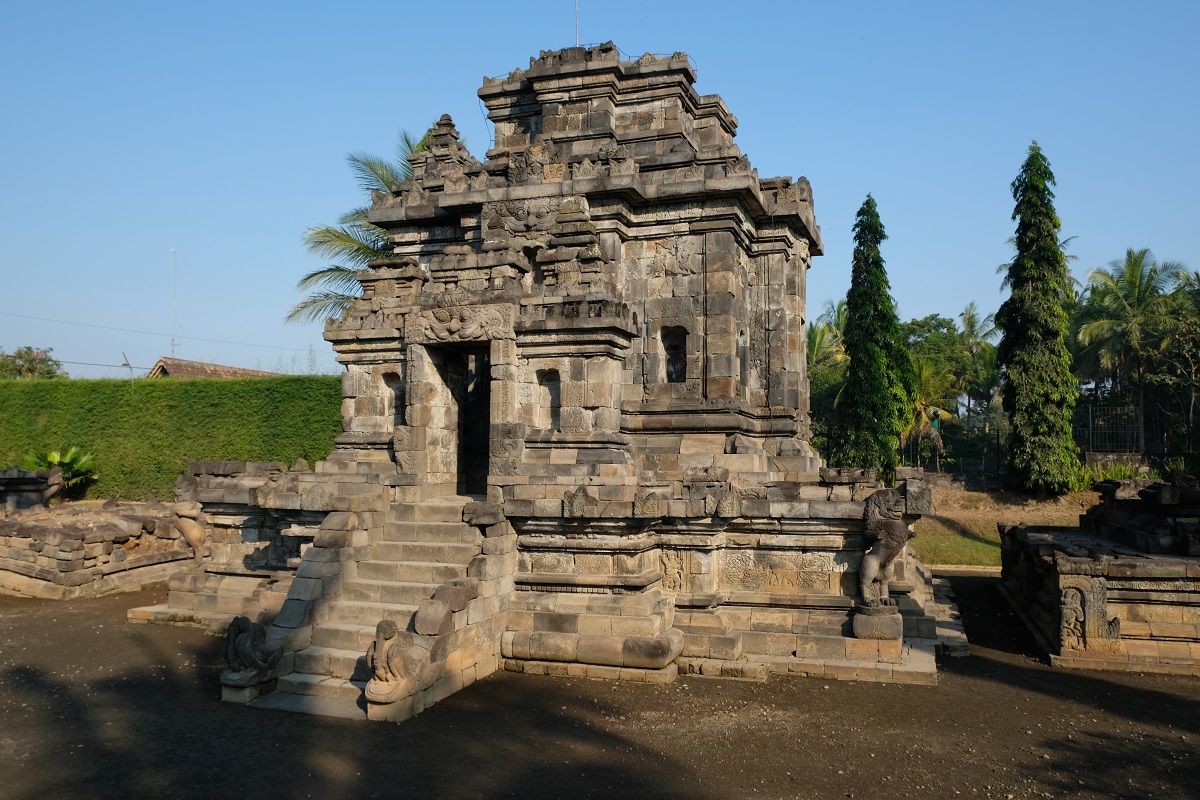


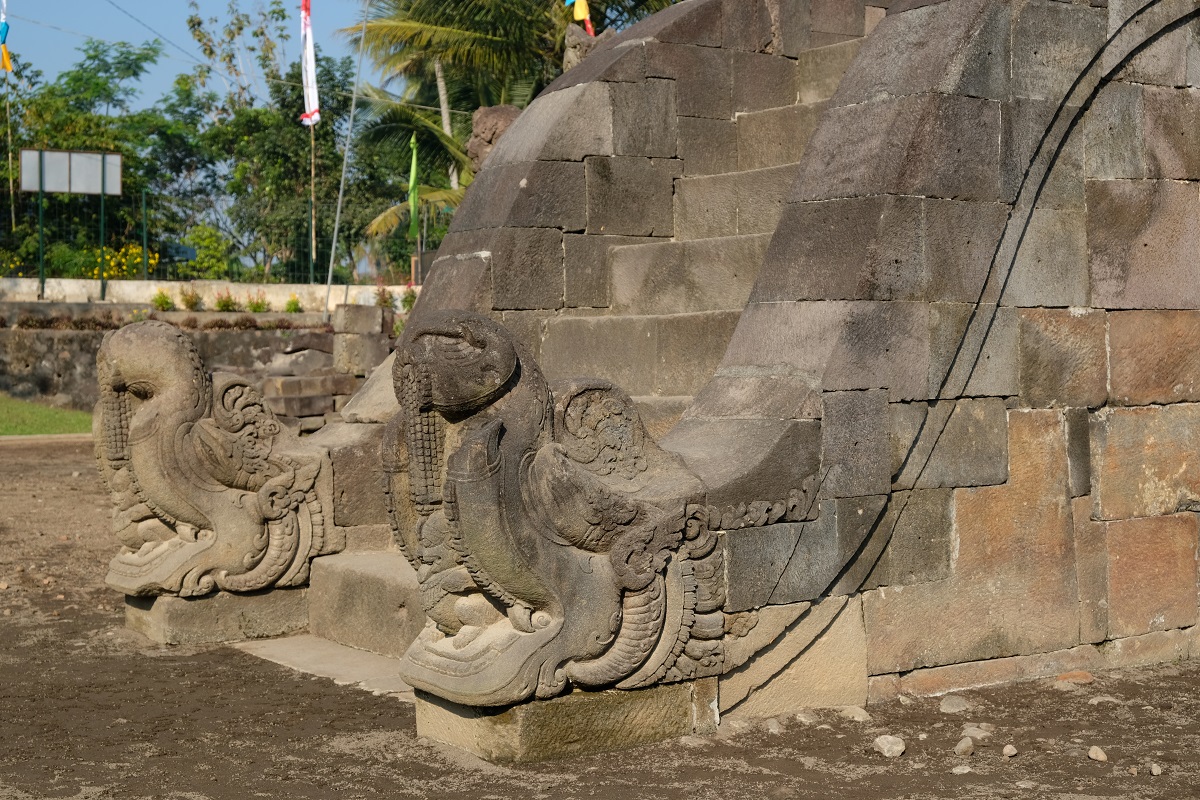
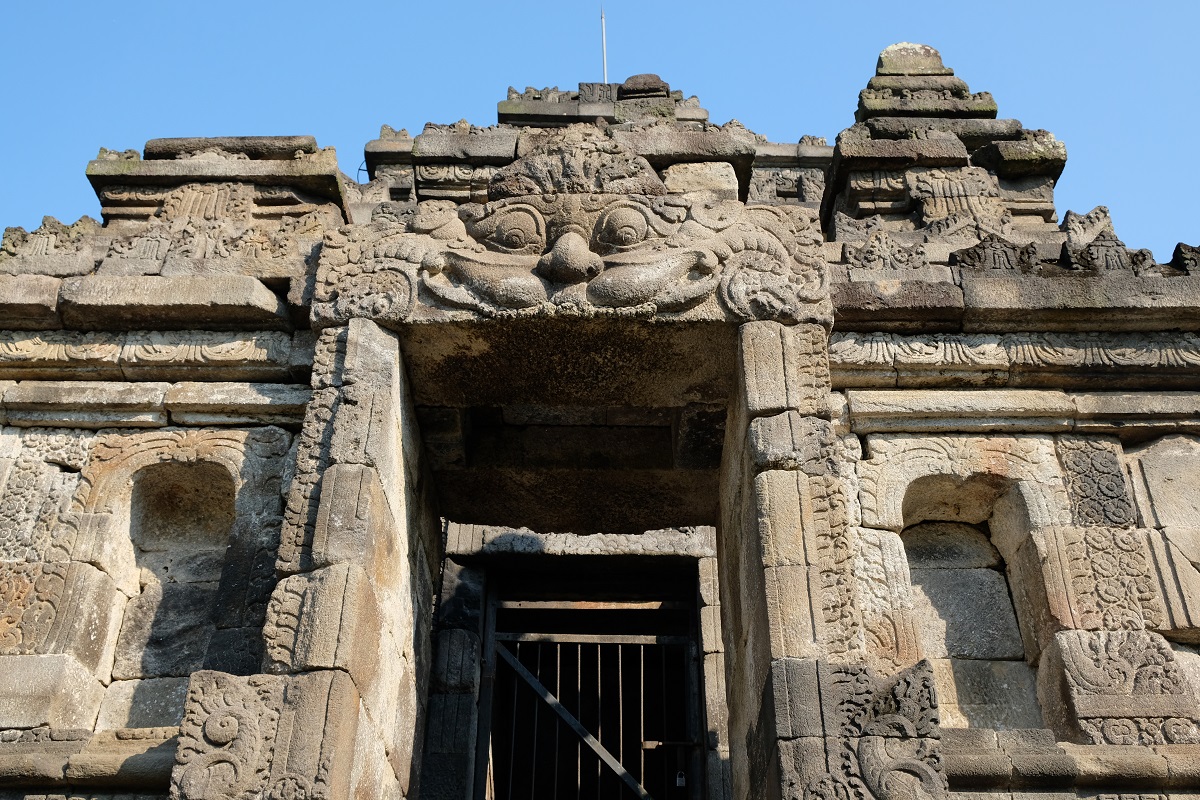

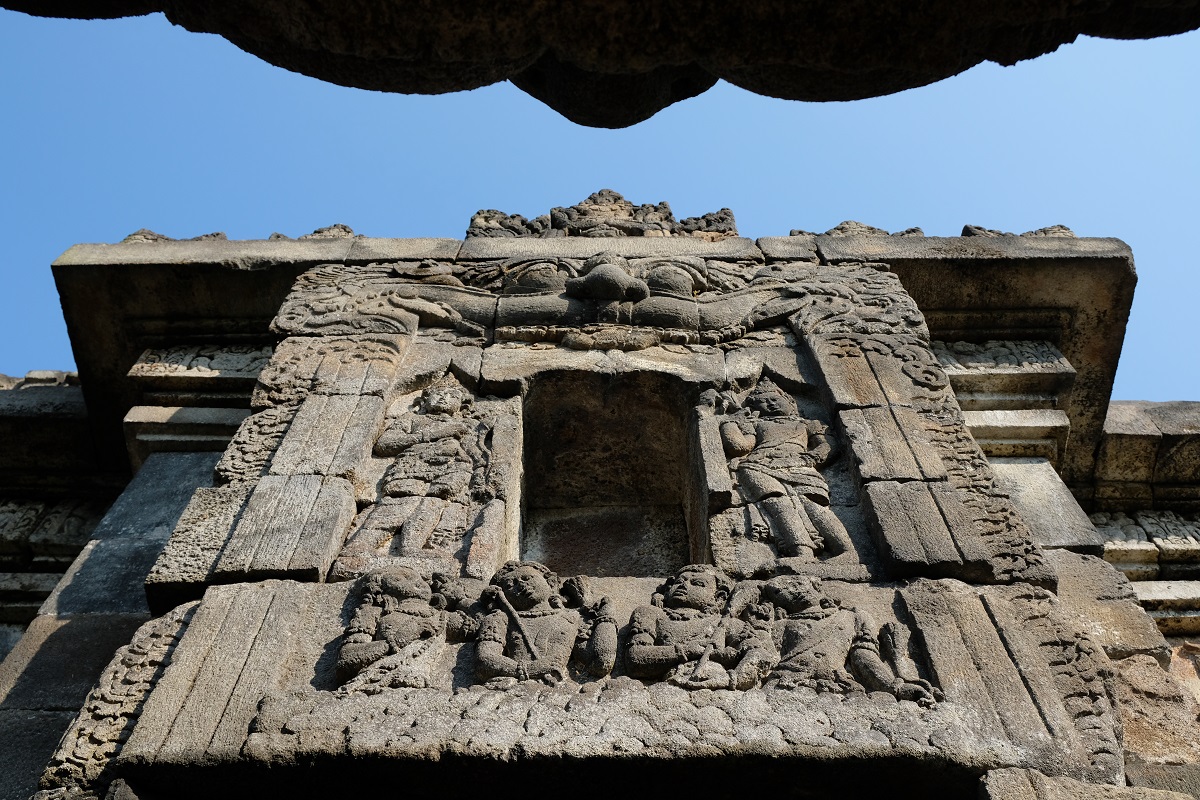
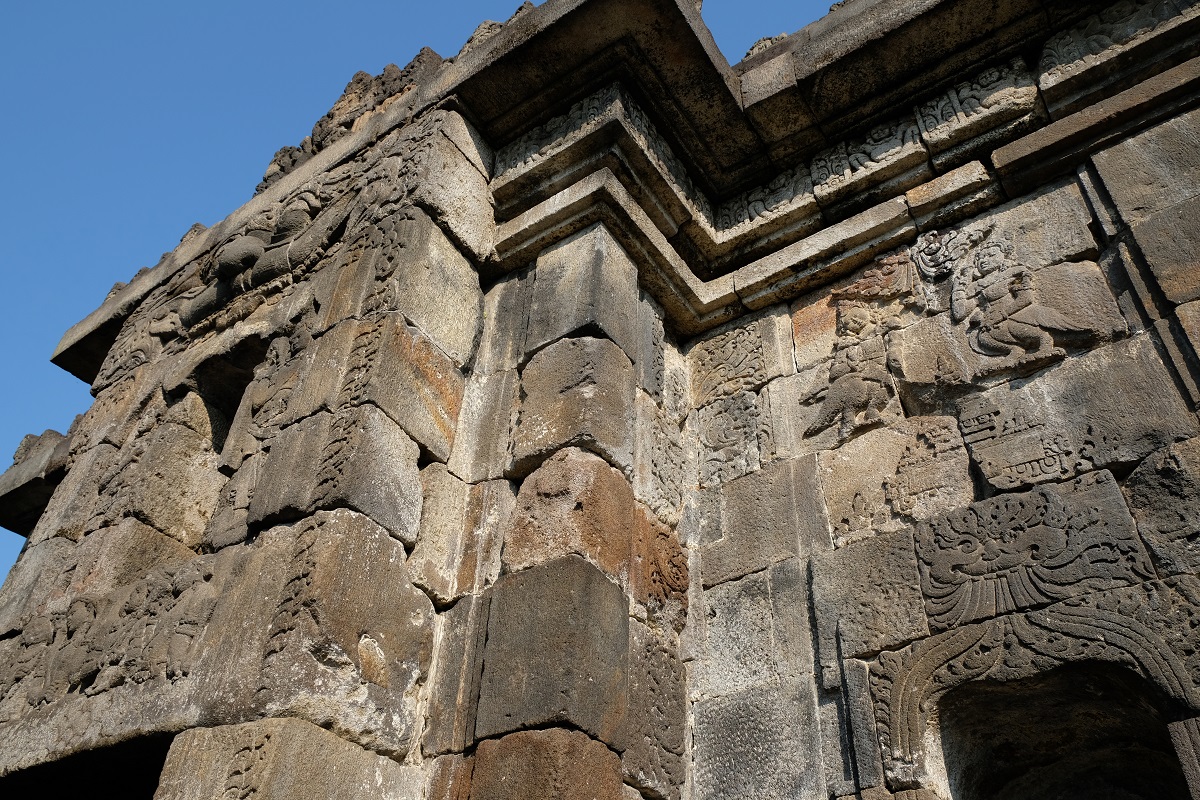
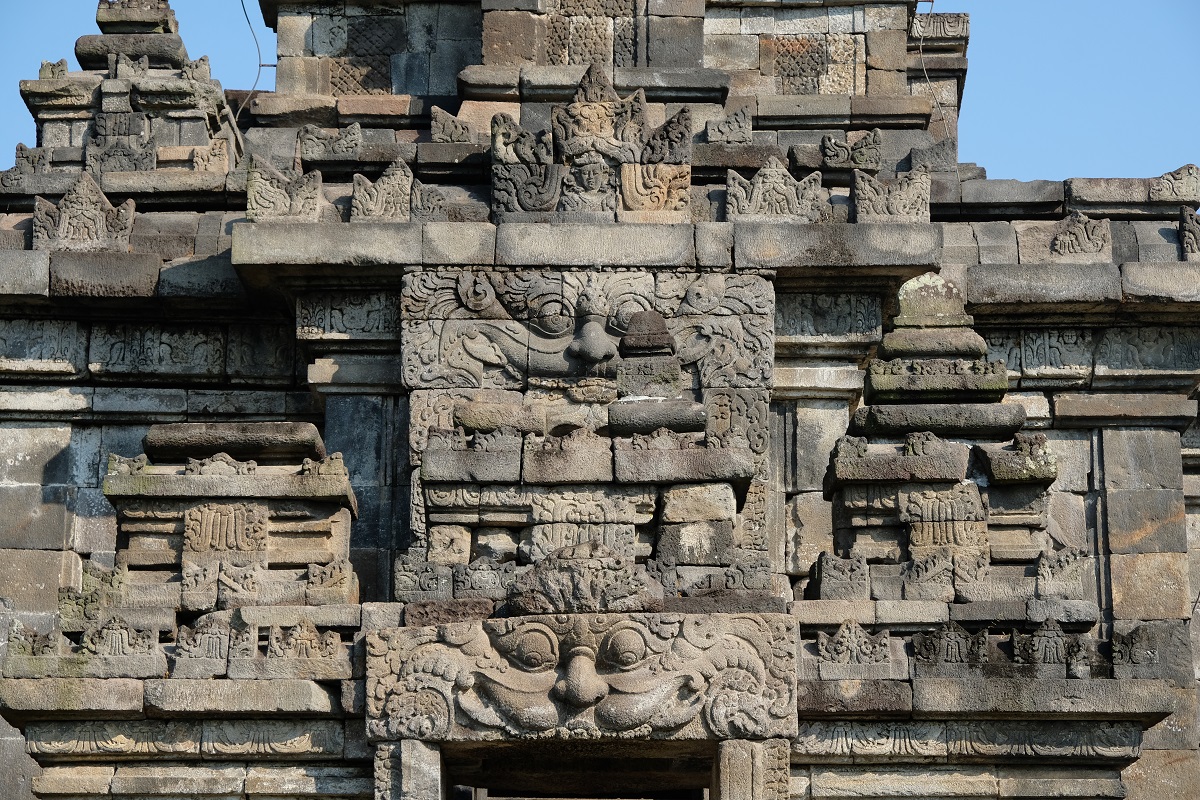
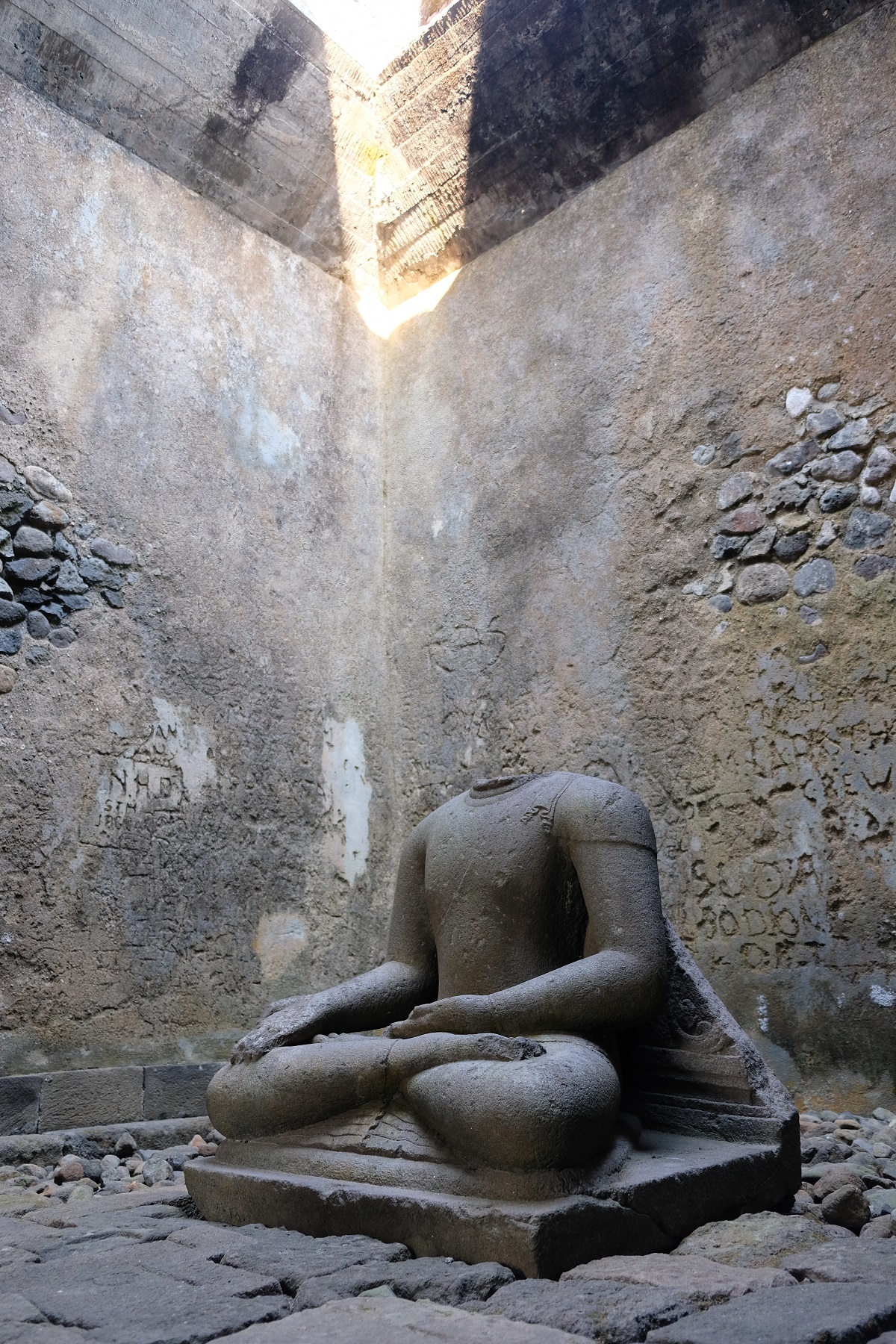
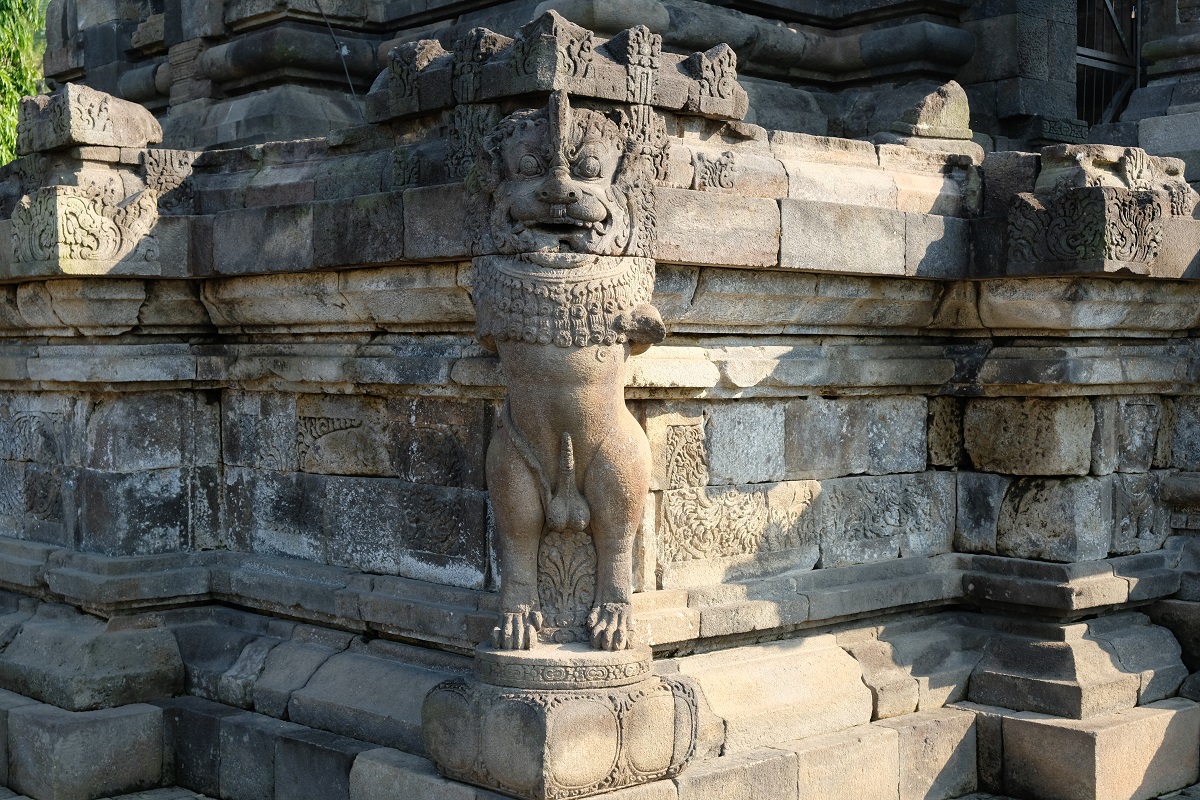
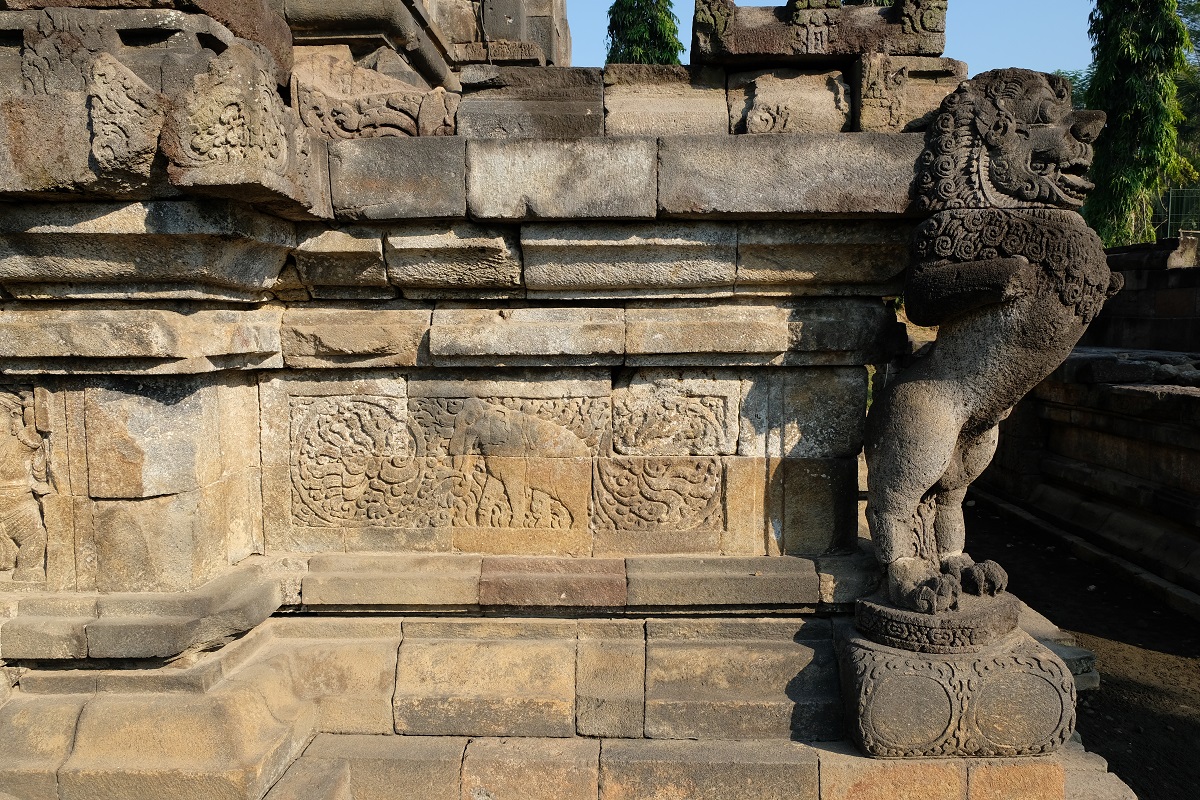
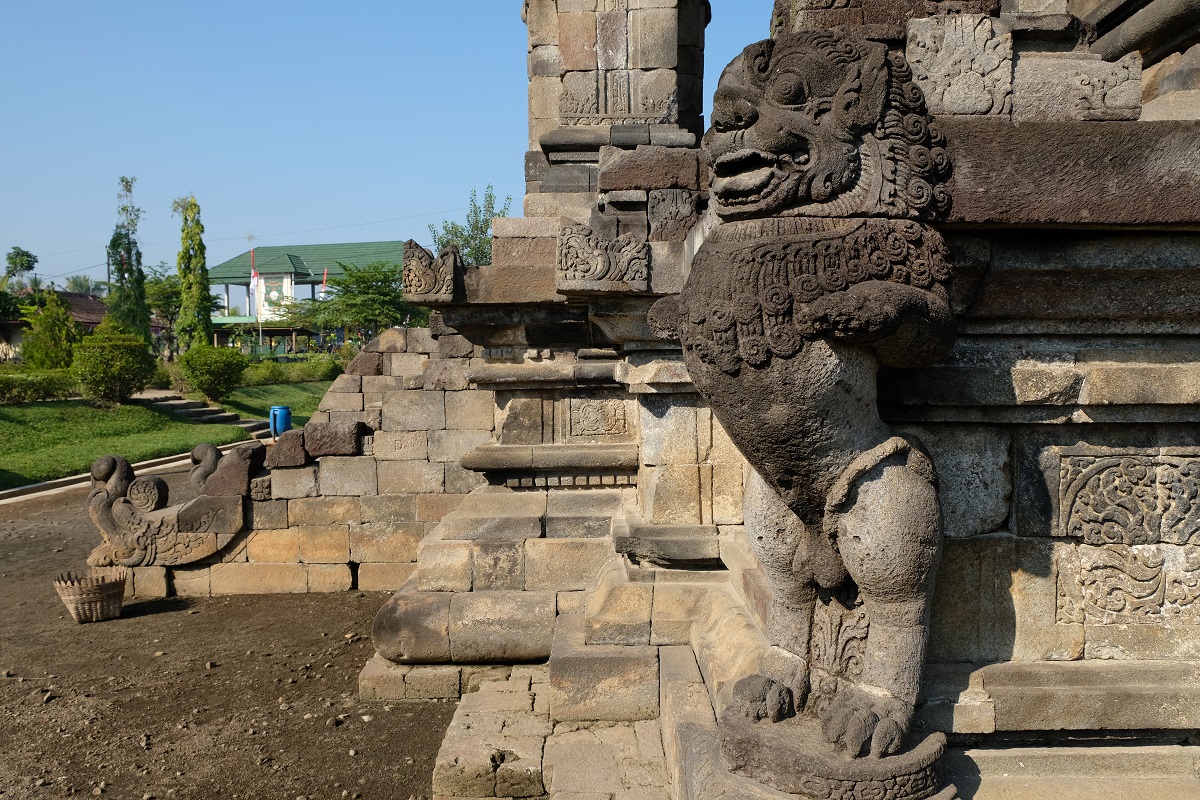

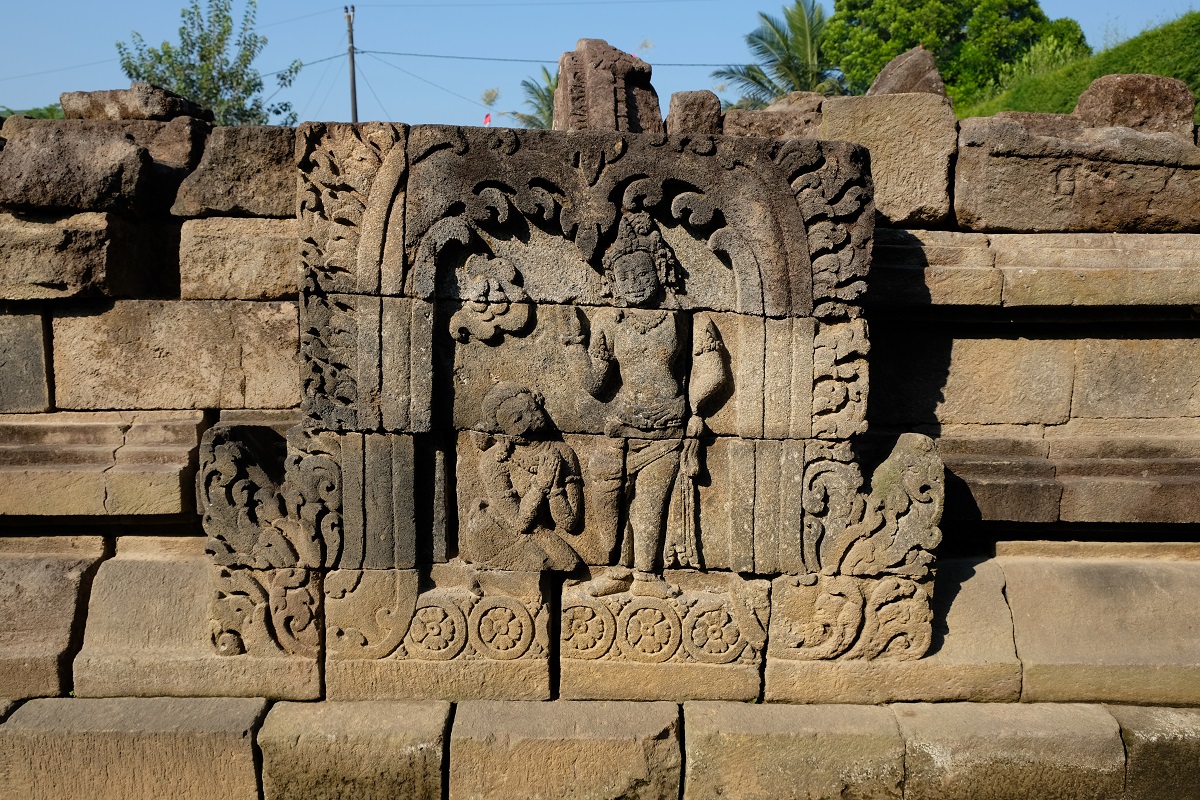
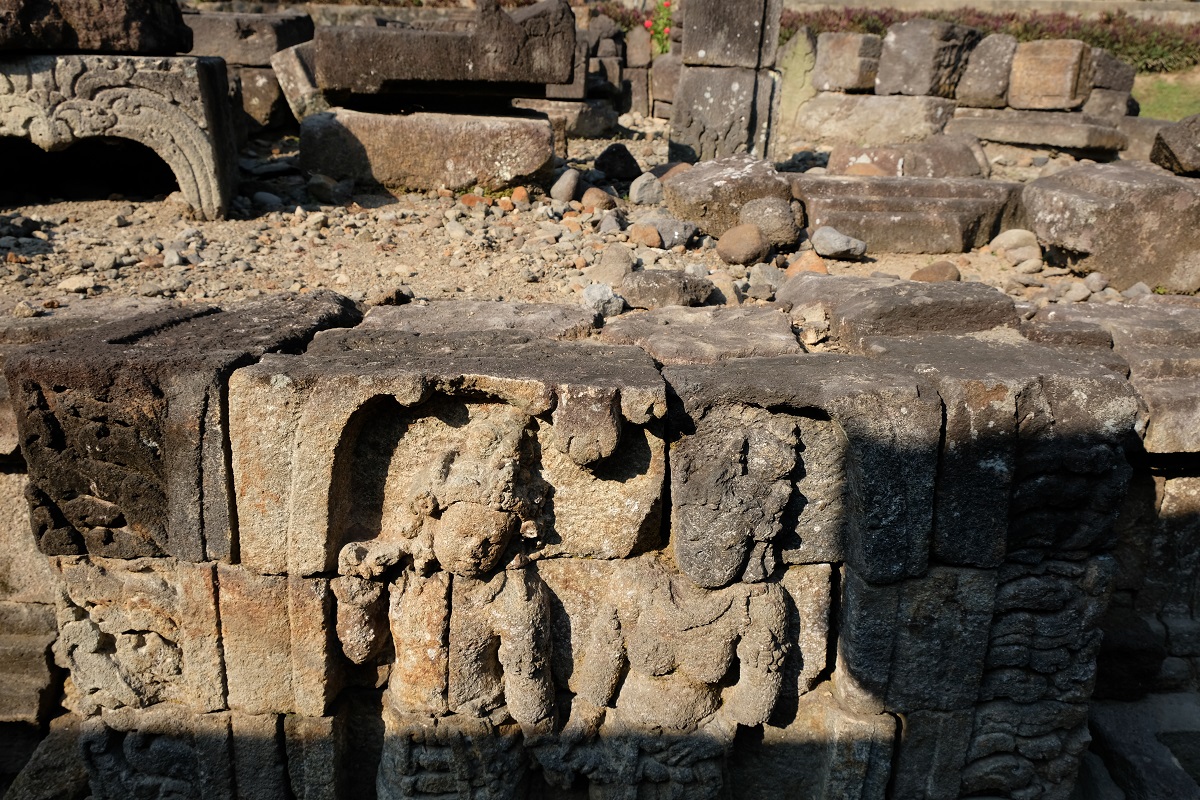
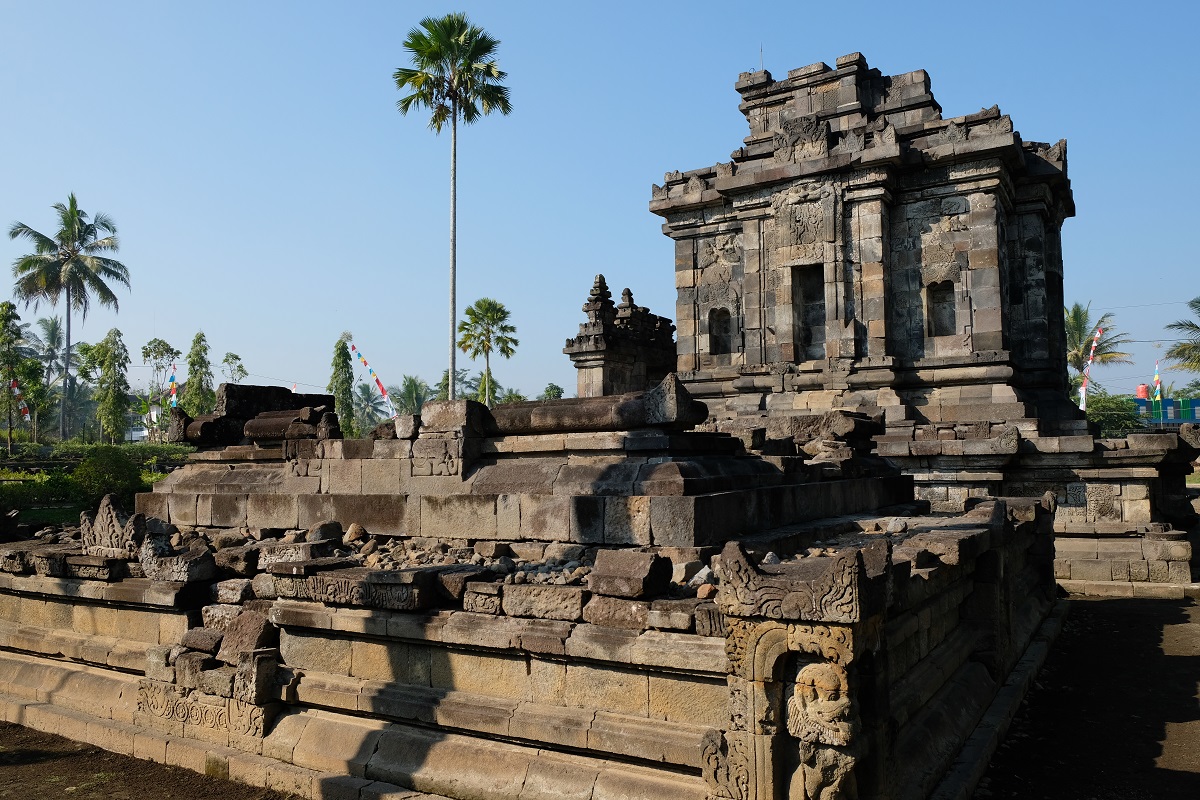
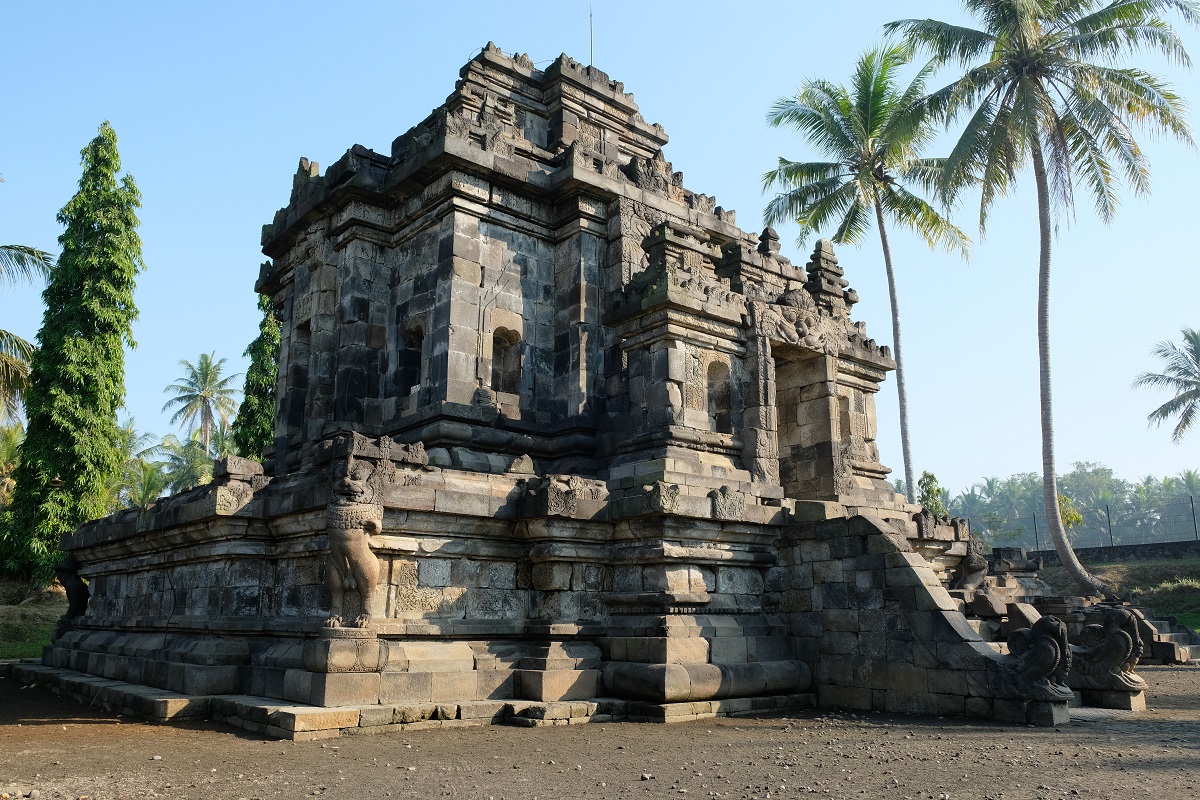
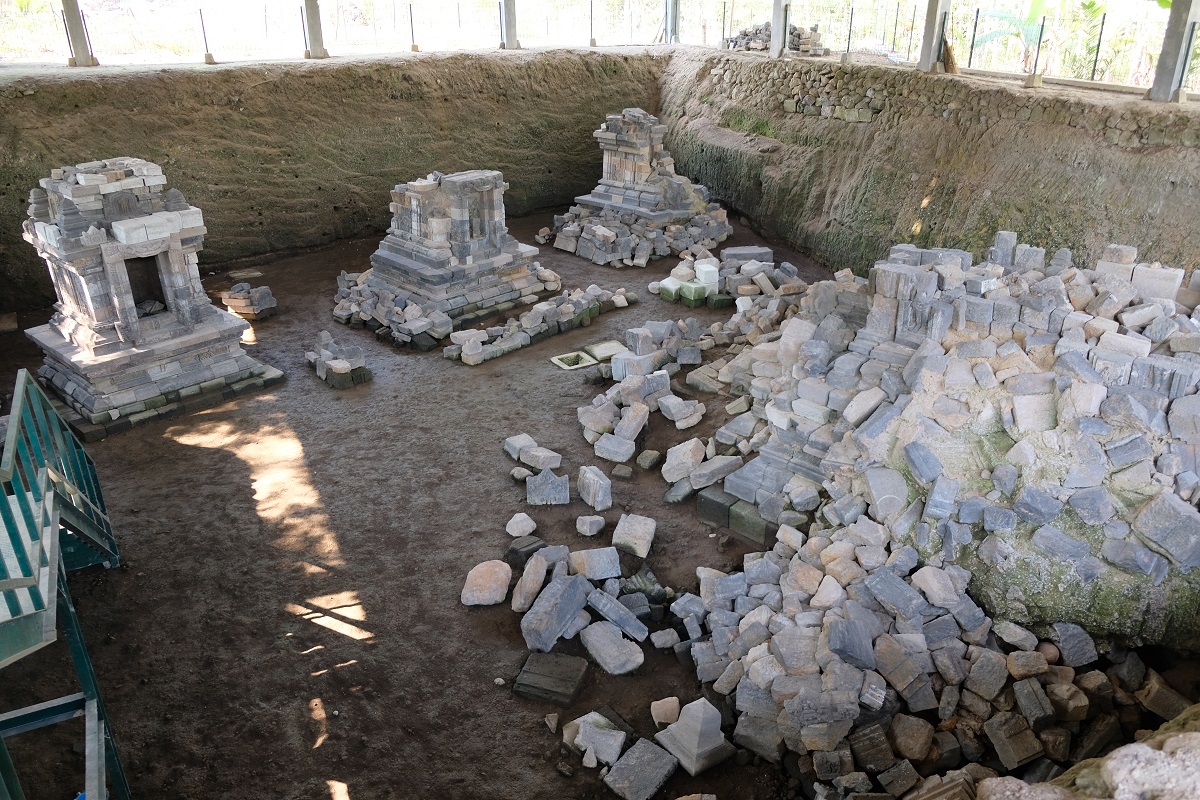

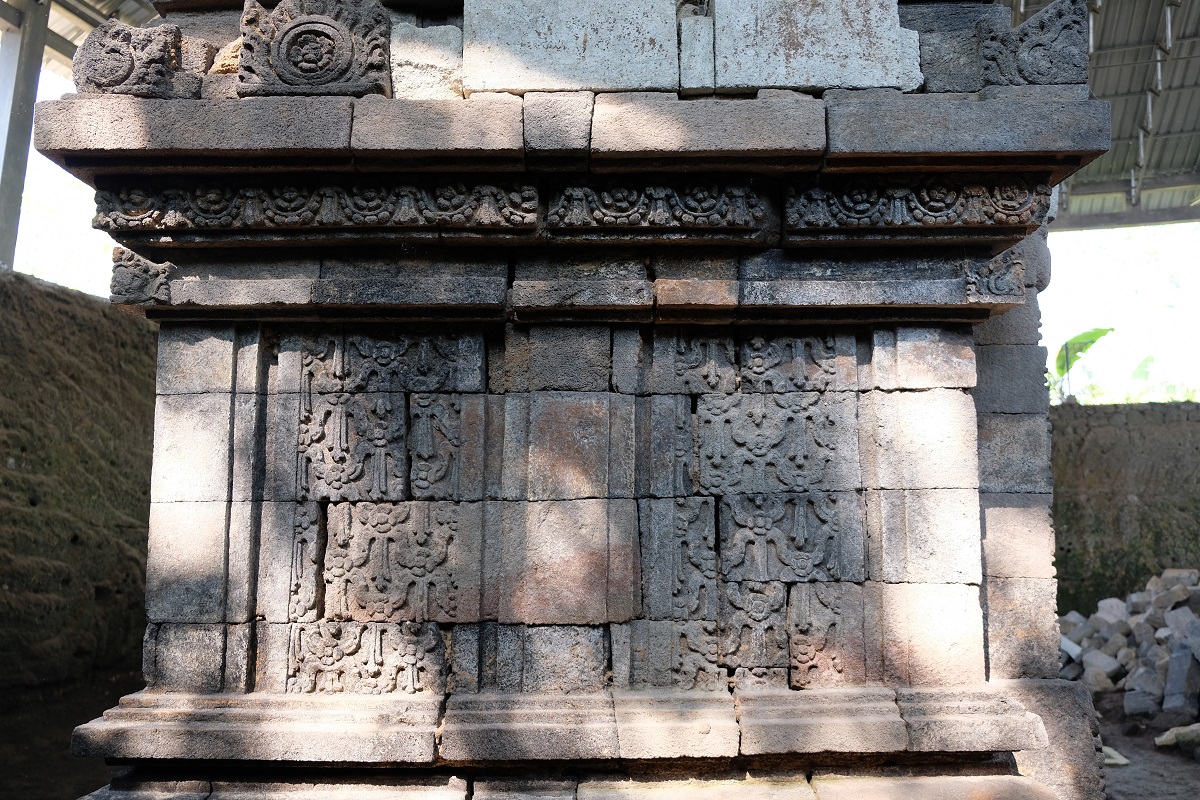
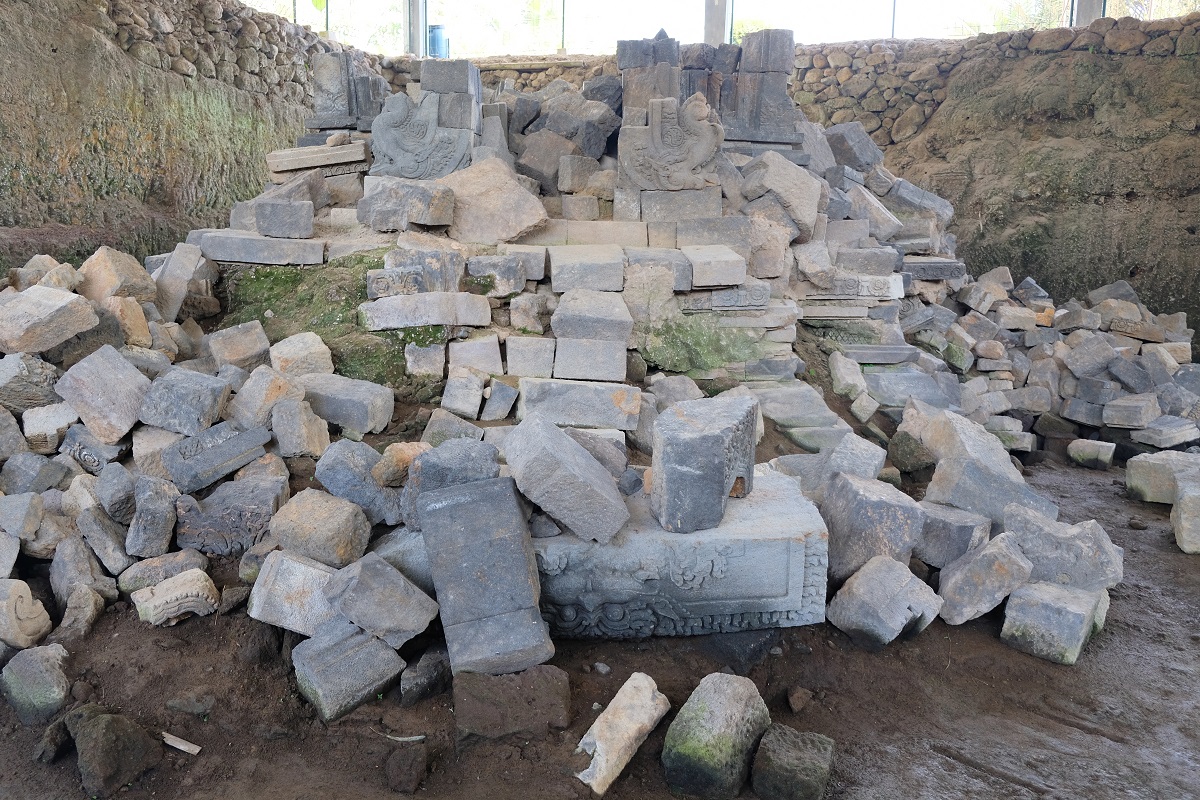



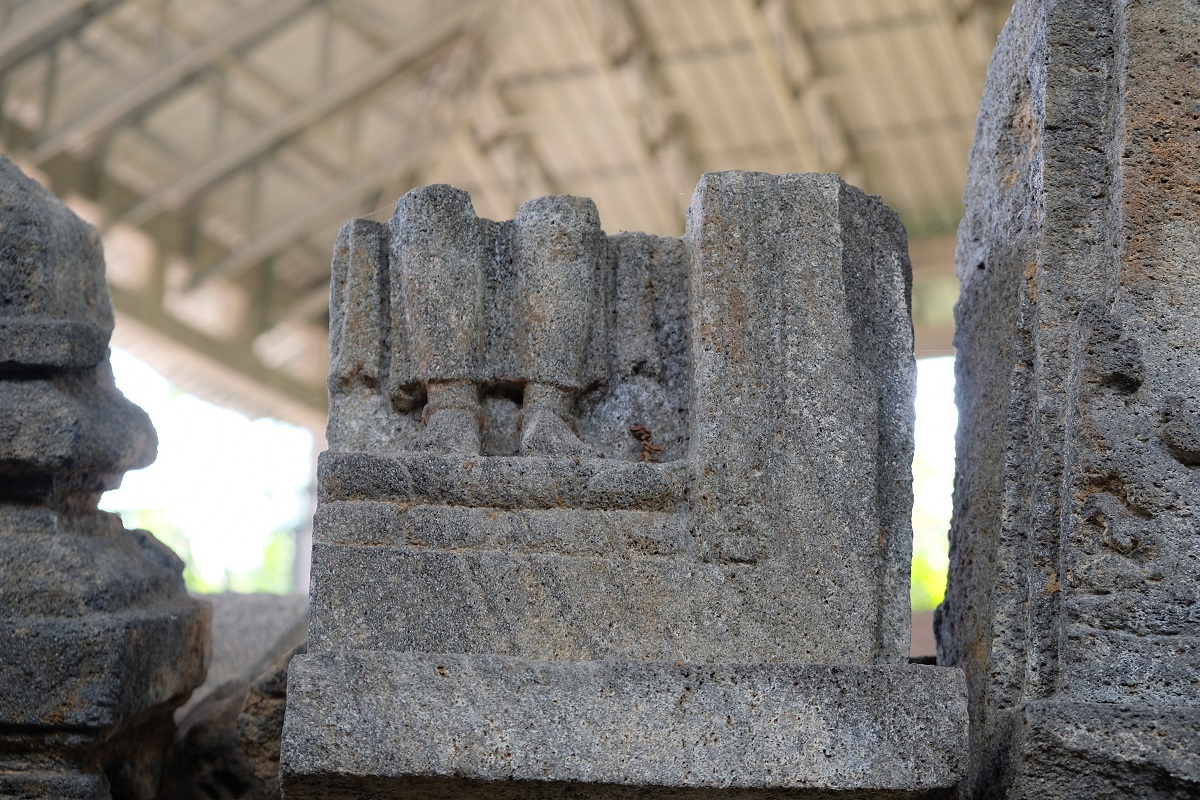


Those temples are very well preserved, you can still see the small intricate details of the structures. The picture of the two Makaras at the base of the temple remind me of the feathered serpents sculptures at the base of the Temple of Kukulcan in Chichén Itzá.
LikeLiked by 4 people
Ahh yes, I remember when I first saw photos of the base of the Temple of Kukulcan, I thought about how ancient civilizations across the world shared some similarities despite the great distances that separated them. I really hope someday I can travel to Mexico, one of my dream destinations thanks to those intriguing heritage sites.
LikeLiked by 1 person
Belum pernah ke Candi Ngawen, dan baru tahu bagaimana rupa Candi Losari dari tulisan Bama di sini. Keren-keren. Memang nggak salah kalau Mataram Kuna masuk sebagai dinasti yang rajin bikin candi dengan ragam fungsi. Oh ya, Bama sempat ke Candi Kedulan? Kedulan memiliki kontur seperti Candi Sambisari yang terletak menjorok ke bawah. Jadi setelah lihat Candi Losari bisa saya simpulkan pemilihan lokasi serupa dengan mereka.
LikeLiked by 1 person
Sempat dan kebetulan di trip yang sama. Tapi pas saya ke sana Candi Kedulan belum bisa dimasuki karena masih ada pengerjaan pemugaran. Di postingan berikutnya saya memang rencananya akan nulis tentang Candi Sambisari dan Kedulan sih.
LikeLiked by 1 person
Duh Mas Bama bikin aku langsung mules ngliat candi, ingin langsung terbang hihihi… Candi Ngawen itu cantik banget setelah restorasi yaah.. dan aku liat di mapnya, aduh gak jauh-jauh amat dari Borobudur ya…
Tapi beneran, aku menikmati banget foto2 mas Bama lho… dan rupanya disekitarnya masih banyak candi-candi kecil yaah.. Duh yang satu belum didatangi sudah muncul lagi Candi yang keren…
BTW, mas Bama datang hari apa sih? Kok kayaknya gak kliatan pengunjung lain…
LikeLiked by 1 person
Waduh kok malah bikin mules 😀 Iya betul mbak, kalau ke arah Borobudur dari Jogja di jalan utama menuju Magelang di salah satu belokannya itu mengarah ke perkampungan lokasi Candi Ngawen. Saya waktu itu hari Sabtu pagi sih mbak, tapi sepertinya karena candi-candi ini gak terlalu terkenal jadi pengunjungnya masih bisa dihitung jari.
LikeLiked by 1 person
I love to discover things unexpectedly as you did when you were told about Candi Losari, Bama. It is indeed amazing that new discoveries can still be made. Not to mention the dedication it then takes to reconstruct these ruins. It must be like building giant 3D puzzles without the complete picture as reference, although I guess the archaeologists have a general idea of what these temples used to look like.
LikeLiked by 1 person
Exactly because of the reasons that you mentioned here, there was a time when I wanted to be an archaeologist. There’s something exciting about discovering ancient structures that have long been forgotten since they shed light upon life on the island of Java many centuries ago.
LikeLike
I also secretly dreamed about being an archaeologist when I was young, until I discovered that they spent most of their time in tiny dark rooms and not in the field, Bama. Now, I explore like you and read about it. You are blessed to live in a country with a very rich history that stretches back in time. Enjoy your explorations.
LikeLiked by 1 person
We usually dream of having a job we think really cool until we know everything it entails. 🙂 Indeed, there are still so many parts of Indonesia I have yet to explore.
LikeLiked by 1 person
It would be a great loss for future generations if these temples were not rediscovered. What I’m impressed most in those temples are the big eyeballs 🙂 They look so real! Too bad that they couldn’t scare the thieves away…
LikeLiked by 1 person
Unfortunately, we don’t know for sure how many temples had been damaged throughout the centuries because their stone blocks or bricks had been repurposed by the local people to build houses. However, it really is encouraging to see such rediscoveries still happening on the island up to this day.
LikeLiked by 1 person
Exciting to still unearth ancient temples when most archeologists believe they’ve discovered just about everything. These discoveries also reveal how entrenched Hinduism was throughout Java at one time.
LikeLiked by 1 person
That is true. The latest discovery happened less than two months ago in a high altitude region of Central Java when a local farmer unexpectedly found a big statue of Ganesha buried in the ground.
LikeLiked by 1 person
Wow, such amazing temples! And I couldn’t agree more with the first comment about the similarities with some of the temples in Mexico. The Kalas over the doorways immediately reminded me of Tulum and Chichen Itza (which in turn remind me that I have a lot of writing to catch up on). Some of the ornate carvings also remind me of sites in Cambodia. How lucky we are to be able to visit, photograph, share and compare all of these places. And yet there’s so much we don’t know about them and even temples we’re still finding as you’ve shown with Candi Losari. Fascinating, Bama!
LikeLiked by 2 people
You make me want to visit Mexico even more, Kelly. I remember reading your posts on some of the country’s archaeological sites and wondering when I can see those places for myself. Although my travel wish list keeps growing, Mexico remains on top of it. Speaking of the ancient temples in Java, I’m fascinated by the fact that in the past few years more and more temple fragments and artifacts have been unearthed after so many centuries buried deep beneath our feet!
LikeLiked by 2 people
Fascinating photos and background information and history that you have provided in this post Bama. I found myself drawn to the lion sculptures as well and could not help noticing that in one of them the erect genitalia are very “beautifully sculpted”? In one of the other lion sculptures only testicles are visible. Am I the only one noticing these details.
My favorite archaeological sites were in Chan Chan in Peru. Sand cities still in process of being unearthed, discovered and restored.
Terrific post!
Peta
LikeLiked by 1 person
Those lions might have been created by different sculptors, hence the variations in details. This and the fact that they have been exposed to the elements for more than a thousand years probably help to explain why in some of the lions only the testicles are still clearly visible today.
Chan Chan! The first time I learned about it was probably four years ago and I was immediately captivated by the images I saw of this place. It makes me think, while my travel wish list keeps growing, it is time I don’t have much right now as I only get 15 days of annual leave. It’s also one of the reasons why in the end I seem to always be going to places across Asia, although I really want to change this sooner than later.
Thank you for reading and sharing your thoughts, Peta!
LikeLike
In many of your posts about old temples in your part of the world, I’m captivated by the stone. And now you’ve given me its name – one I had not heard before. One of my favorite things that can happen while traveling is for a local person to give me a tip to see something that wasn’t on my itinerary and that might not be widely known. That happened in Cuba one day, and the resulting outing was one of my favorites!
Too bad you and I can’t switch homes and jobs for a year! That way, I could use my limited time to see much more of Asia, and you could hit Mexico and Central and South America, where it’s easy for me to go!
LikeLiked by 1 person
The same thing happened to me on my first trip to Hong Kong when James took me to places most first-time visitors won’t know, let alone see. Also when we were in Chennai, Madhu took me to this small but beautiful Armenian church which is quite off the tourist trail. So, when you do visit my part of the world, I’ll try my best to do the same — although the idea of switching homes really is very tempting! I’ve been planning to go to Mexico and Peru, but due to time constraints I always end up traveling somewhere in Asia (or, as per my latest two trips to new countries, the Middle East).
LikeLiked by 1 person
You put a lot of effort into this blog, thank you for this. I enjoy both the stories and the wonderful pictures. The temples are fascinating. I’m glad they weren’t overcrowded.
LikeLiked by 1 person
There’s something between me and ancient temples which keeps me coming back for more, as well as looking for lesser-known sites. Glad you enjoyed this story, Matt.
LikeLiked by 1 person
Do you know about the Three Chola Temple built in the south Indian during their regime just to honour their gods here is a link to that https://www.townstovillages.com/the-three-great-cholas-temples/
LikeLiked by 1 person
Yes, I do. In fact, I visited Brihadeeswarar Temple in 2015 and wrote a post about it. Truly a magnificent place it was.
LikeLike
Pingback: Sambisari & Kedulan: the Underground Temples | What an Amazing World!
Pingback: Candi Ijo: A Silent Witness of Change | What an Amazing World!
For me, Candi Ngawen was a highlight of our long weekend in Jogja – and Candi Losari was a lovely bonus! We really lucked out with the caretaker who unlocked the metal gate to the inner sanctum at Ngawen; the reliefs at that temple were so intricately carved and surprisingly well-preserved. I also relished the fact that we were the only visitors there. Thank you for putting both these temples on our short itinerary!
LikeLiked by 1 person
Of all the temples we visited on that trip, Candi Ngawen was in fact the one I looked forward to seeing the most, exactly because of those lions. There are other temples I also want to go to, but their relatively far locations from any big cities where we can fly in means we have to visit them on a road trip sometime in the future.
LikeLiked by 1 person